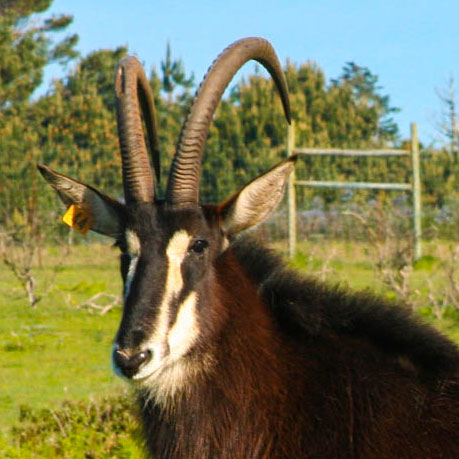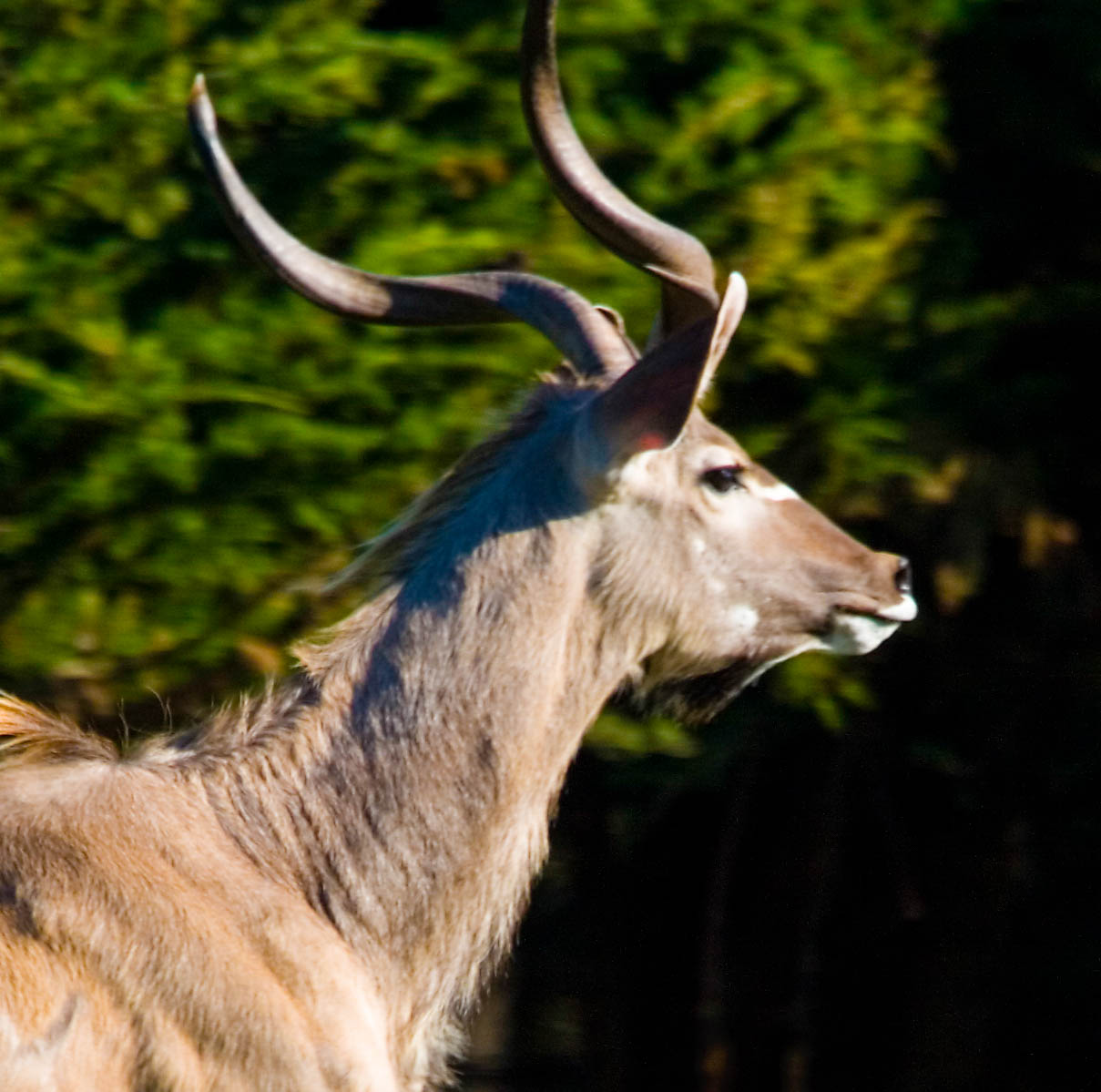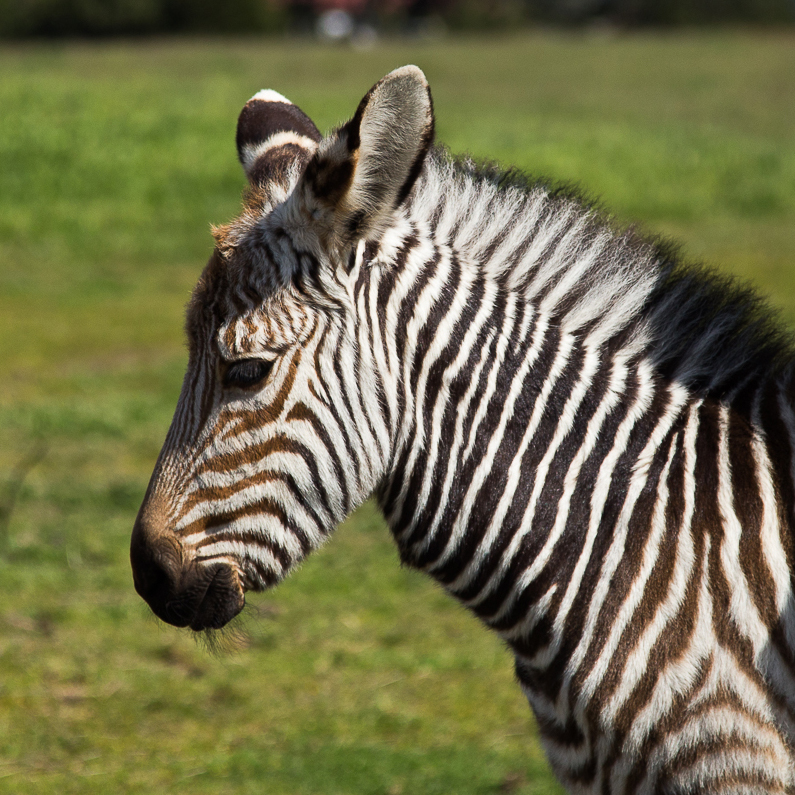Nubian Giraffe
The tallest of all giraffes is the Nubian species. This means they are considered to be the tallest land animal on the Earth. They can be an astonishing 20 feet in height. They can also weight about 2,800 pounds with the males weighing more than the females by several hundred pounds. You will notice that the coloring of the Nubian Giraffe is very unique when compared to the other species.
Their coat consists of dark patches and then areas of white through them, almost like the sight of water running through a small creek. They have a brown and orange color to them that is very beautiful. Their markings are often along the lines of those as leopards.
You will also notice that their markings stop at the top of their very long legs.
As that area of the body comes into the picture, their spots turn into speckles that get smaller and spread further and further apart. Everything from that point down is one of many different shades of white. For some of these animals, the pure white can start at the knee caps.
The Nubian Giraffe is endangered with less than 3,000 left in the wild. In fact, there are no less than 110,000 giraffe left in Africa and the are extinct in 9 countries in Africa. More information can be found at the Giraffe Conservation Foundation.
breeding
The number of horns on top of a Nubian Giraffe is very interesting as well. Other species on have two but they can have up to five. They have two in the same place as other giraffes, one in the center, and two behind those. It is hard to believe looking at it, but the neck of any giraffe has the same amount of vertebrae as humans – 7.
The body of these giraffes is designed to give it speed, power, and agility. There are very few animals this size that can move so swiftly. They have amazing sight, allowing them to see predators for many miles. They have a wonderful sense of smell and hearing too so they are always alert to what is going on around them. They have a tail that is very long and it helps to keep pests such as flies away from them.
evolution
Giraffes are related to deer and cows. You may not think so looking at them, but history could indicate that these giraffes were once shaped more like deer. They grew their long necks out of necessity and as a result the rest of their body had to grow as well. Giraffes are like cows in the fact that they make cud, they graze, and they have four stomachs for food digestion.
The controversy over how these giraffes evolved continues to be full of mystery. It is known though that this is a distinct species of giraffe. For a very long time it was believed that they were simply a sub species of another. DNA testing though has ruled that out.
behavior
While Nubian Giraffes live in herds, the number of members is smaller than with other species. They also have distinctions between the males and the females. They live separate from each other but remain in the same proximity to each other. The only time the two sexes really mingle is when they are going to take part in mating.
They are tolerant of other animals around them as long as they don’t feel threatened. For the most part they are very mellow but the males are known to engage in battles for mating. Since this species can mate all year long, those battles seem to be more frequent. However, they aren’t as intense as those from other species.
habitat/distribution
Lake Baringo in Kenya is the common area where you will find these giraffes. In fact, many of the people there refer to them as the Baringo Giraffe. Most of them live on one of two wildlife refuges in Kenya. Others of this species can be found around the Eastern parts of Uganda. You will find these giraffes living in a variety of habitats. Some of them are found in the wooded areas and others are around the Sahara Desert. The overall range for them has almost been depleted from what was once considered their natural habitat.
diet & feeding
As is the case with all giraffes, the Nubian Giraffe is one that feeds on plant life only. They have thick lips, tongue, and throat so they are able to consume acacia trees and others that are very thick and thorny. While all of them feed from upper levels, it has been observed that the males will eat from the very tops of the trees and the females will stay at a lower level.
They will consume a variety of other foods that are seasonally available to. This includes fruit and berried. Their tongues are about 18 inches long, and they are very powerful. They can use them to wrap around things like we do with our fingers and then draw them to them mouth to feed on them.
While these giraffes do have a home range, they continue to move along looking for food. They won’t completely wipe out what is offered in a given location before they move on. It isn’t known what signals for them to move on instead of continuing to feed.
reproduction
Reproduction can occur with these giraffes when they are about five years of age. The females tend to mate years sooner than the males. This is because the males have to prove among each other who is the strongest in order to be able to mate.
This particular species of giraffe doesn’t have a set season for mating. As long as their basic needs are met they can take part in it all year long. The period of gestation is from 14 to 16 months. They are known to only give birth to one calf at a time.
Many experts have found evidence to suggest this particular species of giraffe will mate with others. They have identified some hybrids and are doing their best to make sure that doesn’t continue. With such limited numbers of them remaining it is important for them to be mating within their own species. There are specific breeding plans in place in various captivity locations to help with this situation.
The females will nurse the young for the first year of life. They are very good at caring for their young. They are affectionate and use lots of non-verbal communication to encourage them in a variety of ways.
predators
These giraffes have quite a few predators that they need to be concerned about. In the wild they consist of hyenas, lions, and leopards. Generally, these predators will take down the young and the sick because full grown adults are too much of a risk. They can easily injure or kill such predators with the use of their legs. The mothers keep the young from the rest of the herd for the first month or so. This makes them very vulnerable and so there is a mortality rate of more than 50%.
Poaching of the Nubian Giraffe continues to be a very serious problem in Kenya. Thrill seeking hunters from around the world are willing to pay lots of money to be taken on a guided hunt for one. As their numbers dwindle the urgency many of these people have in order to get one before they are gone increases. The future for the Rothschild Giraffe is in serious jeopardy at this time. Today there are only hundreds of them left.







